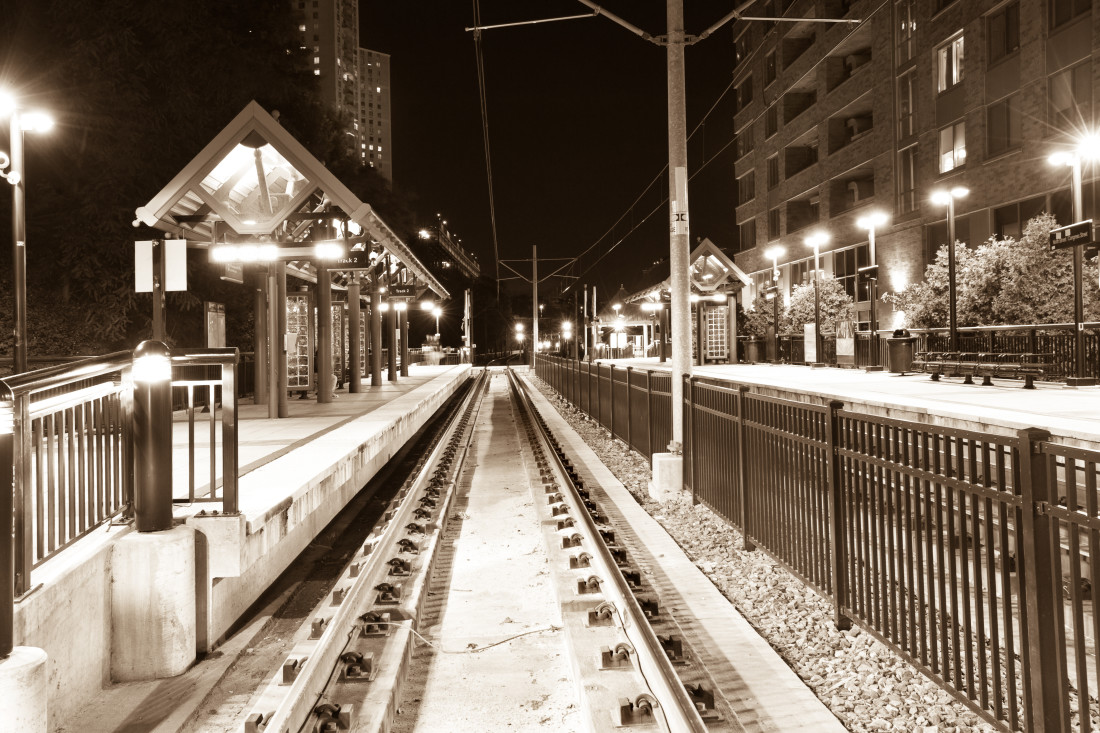 The New Jersey Department of Transportation (NJDOT) launched the Transit Village Initiative in 1999. This is now a multi-agency program led by NJDOT and NJ Transit - together with eight other agencies - which creates incentives for municipalities to redevelop or revitalize the areas around transit (train and bus) stations using transit-oriented development (TOD) design standards in conformity with the New Jersey State Development and Redevelopment Plan (State Plan).
The New Jersey Department of Transportation (NJDOT) launched the Transit Village Initiative in 1999. This is now a multi-agency program led by NJDOT and NJ Transit - together with eight other agencies - which creates incentives for municipalities to redevelop or revitalize the areas around transit (train and bus) stations using transit-oriented development (TOD) design standards in conformity with the New Jersey State Development and Redevelopment Plan (State Plan).
The inter-agency Transit Village Task Force has established criteria and an application process for prospective Transit Village designations. The criteria for designation include, among other things, the adoption of a TOD redevelopment plan or TOD zoning ordinance that includes transit-supportive design guidelines, identification of specific TOD sites and projects, identification of bicycle and pedestrian improvements, identification of community and/or cultural events, and the inclusion of affordable housing in the Transit Village district. The Transit Village district encompasses a half-mile radius around the transit station. In order to be designated a Transit Village, the municipality must document that there are multiple TOD projects planned for the area within the district. Designation provides a municipality with certain benefits, including technical assistance and priority funding from some state agencies, and eligibility for grants from the NJDOT.
There are currently 33 municipalities that have received the Transit Village designation after demonstrating a commitment to revitalizing and redeveloping the area around their transit facilities to create compact, mixed-use neighborhoods with a strong residential component. These designations have led to a broad range of development projects. Municipalities including New Brunswick, Morristown, Metuchen, Jersey City and Bloomfield have seen a great deal of development, however other municipalities have faced hurdles.
 Bound Brook's flood risk has been addressed with the 2016 completion of the borough's portion of the Green Brook Flood Risk Management Project by the Army Corps of Engineers. Somerville has approved plans for a mixed-use development near its train station on the site of a former landfill, after struggling to redevelop the site for more than thirty years. West Windsor, after litigation regarding the proposed density of a 25-acre site adjacent to the Princeton Junction train station, is in discussions with a new developer for mixed-use development, including 800 residential units with 16.5% of the units to be designated as affordable housing units. Pleasantville, earning its Transit Village designation in 1999, received a $400,000 Transit Village grant in 2018 for curbs, sidewalks, crosswalks and other streetscape improvements.
Bound Brook's flood risk has been addressed with the 2016 completion of the borough's portion of the Green Brook Flood Risk Management Project by the Army Corps of Engineers. Somerville has approved plans for a mixed-use development near its train station on the site of a former landfill, after struggling to redevelop the site for more than thirty years. West Windsor, after litigation regarding the proposed density of a 25-acre site adjacent to the Princeton Junction train station, is in discussions with a new developer for mixed-use development, including 800 residential units with 16.5% of the units to be designated as affordable housing units. Pleasantville, earning its Transit Village designation in 1999, received a $400,000 Transit Village grant in 2018 for curbs, sidewalks, crosswalks and other streetscape improvements.
In a separate measure, on November 2, 2018 Governor Phil Murphy signed into law a bill requiring NJ Transit to establish an office of real estate economic development and TOD. The purpose of the new office is to assess and develop recommendations for economic development and TOD opportunities for parcels of real property owned by NJ Transit. The hope is that the full inventory and emphasis on economic development within NJ Transit will generate more private-sector interest in developing agency-owned properties, ultimately creating a new revenue stream that could ease the burden on riders. Such development could, in turn, complement existing and contemplated TOD projects in both designated Transit Villages and in non-designated municipalities.
